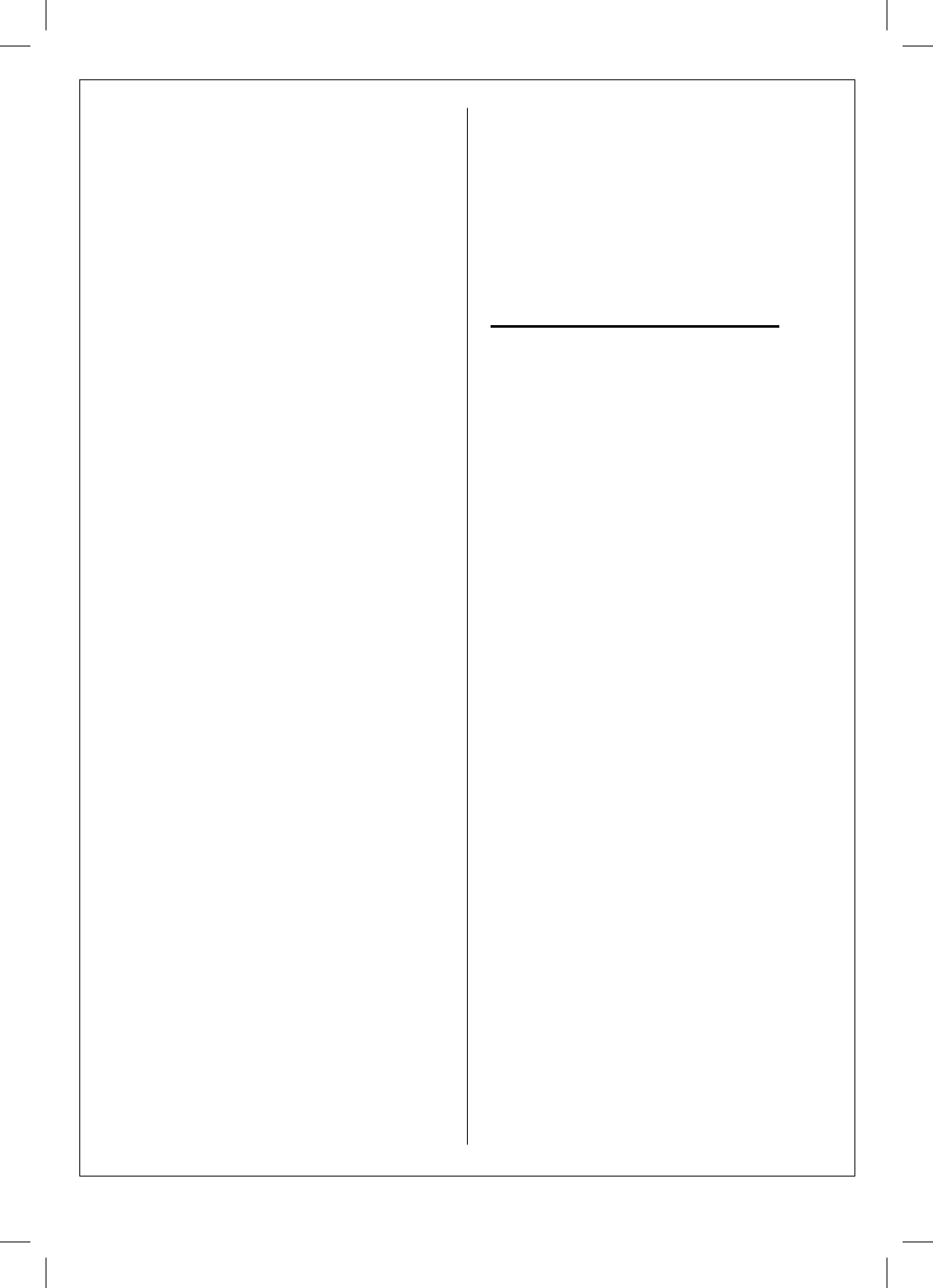Special offers from our partners!

Find Replacement BBQ Parts for 20,308 Models. Repair your BBQ today.

21
onto the hood and down the back of the
barbecue.
I6. Grill Cooking
The burner heats up the lava rock underneath
the grill, which in turn heats the food on the
grill. The natural food juices produced during
cooking fall onto the hot lava rock below and
vaporise. The subsequent rising smoke bastes
the food, as it travels upwards, imparting that
unique barbecued flavour.
When using your barbecue for grill cooking,
you may wish to place the hood in the closed
position which will hold the heat in and give
more even cooking of the food. This should
only be done with the burner turned down to a
lower setting.
I7. Roasting Hood Cooking
Barbecues equipped with a roasting hood give
the option of cooking with hood closed to form
an ‘oven’ for roasting food, such as joints of
meat, whole chickens, etc.
When roasting, turn the burner under the food
to the OFF position. Close the hood and turn
the other burner down to a lower setting i.e. low
to medium to achieve the temperature required.
DO NOT ALLOW YOUR BARBECUE TO
OVERHEAT. Avoid lifting the hood
unnecessarily as heat is lost each time the
hood is opened.
I8. Side-Burner Cooking
When using the side-burner, care should be
taken to ensure that pans are central and flat
on the side-burner grid.
I9. Flare-Up Control
Flare-ups occur when meat is barbecued, and
its fat and juices fall upon the hot lava rock.
Smoke helps give food its barbecued flavour,
but avoid excessive flare-up to prevent food
being burned. To control flare-up, it is advisable
to trim away excess fat from meat and poultry
before grilling. The burner should be turned
down to a lower setting to reduce flare-up.
Flare-ups can be extinguished by applying
baking soda or salt directly onto the lava rocks.
Always protect your hands when handling
anything near the cooking surface of the
barbecue.
I10. End of Cooking Session
After each cooking session, turn the barbecue
burner to the “high” position and burn for 5
minutes. This procedure will burn off cooking
residue, thus making cleaning easier. Make
sure the hood is open during this process.
I11. Turning Off Your Barbecue
When you have finished using your barbecue,
turn all the control valves fully clockwise to the
“Off” position, then switch off the gas at the
bottle. Wait until the barbecue is sufficiently
cool before closing its hood.
J. CARE AND MAINTENANCE
Regularly clean your barbecue between uses
and especially after extended periods of
storage. Ensure the barbecue and its
components are sufficiently cool before
cleaning. Do not leave the barbecue exposed
to outside weather conditions or stored in
damp, moist areas.
• Never douse the barbecue with water when
its surfaces are hot.
• Never handle hot parts with unprotected
hands.
In order to extend the life and maintain the
condition of your barbecue, we strongly
recommend that the unit be covered when left
outside for any length of time, especially during
the winter months. Heavy-duty Outback®
barbecue covers and other accessories are
available from you local Outback® stockist.
Even when your barbecue is covered for its
protection, it must be inspected on a regular
basis as damp or condensation can form which
may result in damage to the barbecue. Any rust
that is found that does not come into contact
with the food should be treated with a rust
inhibitor and painted with barbecue paint or a
heat resistant paint. Chrome plated warming
racks should be coated with cooking oil.
J1. Cooking Grill
Clean with hot soapy water. To remove any
food residue, use a mild cream cleaner on a
non-abrasive pad. Rinse well and dry
thoroughly.
J2. Burner Maintenance
Your burner has been preset for optimal flame
performance. You will normally see a blue
flame, possibly with a small yellow tip when the
burner is alight. If the flame pattern is
significantly yellow, this could be a problem
caused by grease from cooking blocking the


















